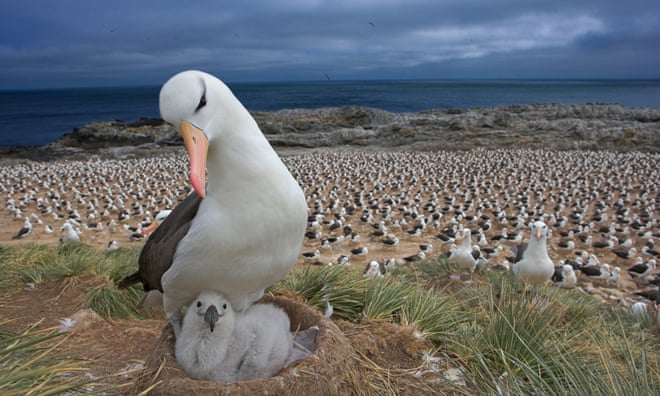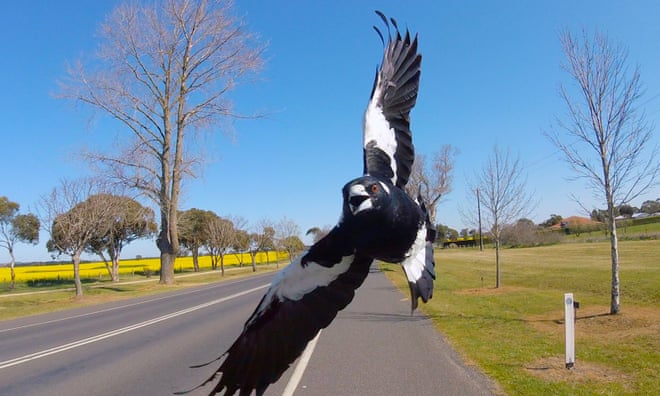In 2011 a shock superstar break-up garnered headlines world wide – not the separation of Ashton Kutcher and Demi Moore, nor Jennifer Lopez and Marc Anthony, however the sudden, inexplicable rupture between Bibi and Poldi, two 115-year-old Galápagos tortoises at Happ reptile zoo in Austria.
After almost a century as a pair, the feminine, Bibi, had had sufficient: someday, she bit a piece off Poldi’s shell, drawing blood, and continued to assault him till zoo employees moved him to a separate enclosure.
Within the wild, Galápagos tortoises are usually not monogamous, so it’s no small feat that Bibi and Poldi’s liaison lasted so long as it did, although their coupling by no means produced any offspring. Makes an attempt at reconciliation weren’t profitable. “We get the sensation they’ll’t stand the sight of one another any extra,” the zoo’s director, Helga Happ, lamented on the time.
Why do breakups happen? Amongst people it’s a query that has engendered ballads, supplied wealthy fodder for novelists and continues to intrigue scientists.
Birds are likely to have partnerships and mammals don’t
Prof Simon Griffith
To interrupt up, after all, you must be collectively within the first place. In social monogamy, animals reside collectively and kind sturdy ties referred to as pair bonds – although sexual faithfulness is a separate query. In mammals, people are among the many exceptions: social monogamy has been noticed in lower than 10% of mammal species.
That low determine comes right down to the distinction in parental funding between men and women, says Prof Simon Griffith, an evolutionary ecologist at Macquarie College. In most mammal species, parental care comes primarily from the feminine, who invests vastly in gestating and offering milk for her younger.
“In lots of mammals, there’s no parental care by the dad,” Griffith says. “It could be that he’ll do a little bit of guarding, or he’ll maintain the territory, however … he can’t actually present that a lot for the offspring.
“In birds, it’s fully completely different. The dad can really care virtually as a lot as the feminine by way of delivering meals.
“That’s why birds are likely to have partnerships and mammals don’t.”
Earlier than strategies to ascertain paternity existed, proof steered that birds as a bunch have been principally sexually monogamous, says Prof Raoul Mulder, an evolutionary ecologist on the College of Melbourne.

“When you have a look at whether or not or not a selected species pairs, and the way lengthy they pair for, and the way lengthy they keep collectively for, and also you classify all of the identified birds, you’d arrive at a determine of over 90%,” Mulder says.
However after genetic testing strategies have been developed, scientists started to understand that birds weren’t as trustworthy as beforehand believed – that social and sexual monogamy don’t essentially go hand in hand. Mulder’s work on the very good fairywren discovered that 76% of chicks born in nests have been fathered by different males. That astonishing price of cuckoldry is bested solely by the Australian magpie at a price as excessive as 82%.
On the entire, nevertheless, Australian birds are likely to divorce lower than European species, Griffith says, as sturdy partnerships are required to outlive fickle environmental situations. Within the northern hemisphere, the timing of breeding seasons is predictable, tied to day size, however in Australia the choice to breed additionally depends upon climatic components.
“Some years, you actually don’t get any rain that’s significant and nothing grows, and the birds and animals that reside there can’t breed,” Griffith says of Australia’s arid zone. “[Breeding] is a way more sophisticated resolution at a person degree however, should you’re in an excellent partnership, you may collectively optimise that call.”
Amongst birds, the poster baby for monogamy is the wandering albatross, which may reside as much as 50 years and normally mates for all times. “This fowl takes such a very long time to ascertain a pair bond,” says Dr Ruijiao Solar, a postdoctoral researcher on the College of California, Santa Barbara. “If a person loses their associate, it takes years to bond with a brand new one to have the ability to begin breeding once more.
“Wandering albatrosses solely have one egg at every breeding season however there at all times must be one mum or dad sitting on the nest to guard their chick and do the incubating however in addition they have to forage … so that they must take turns.
“It actually takes two to have the ability to increase their chicks.”
Solar suggests long-lived species such because the wandering albatross profit extra from sturdy pair bonds. “Every time they breed, they fine-tune their behaviours – they coordinate with one another a lot better, making replica easy [over time].”

Quick-lived species, in distinction, is perhaps extra able to ditch their associate to maximise breeding alternatives. Even so, Solar’s analysis estimates that the divorce price in wandering albatrosses is about 10%. (Examine this to the king penguin, which, although sexually monogamous whereas with a associate, divorces at a price of about 80%.)
Different components that may drive animals to divorce – what scientists name mate switching – embrace a excessive mortality price and a skewed intercourse ratio. Each drive up competitors for mates, creating temptation for these of the minority intercourse to shack up with somebody extra interesting.
Analysis can be rising that the local weather disaster may play a job in divorce. In a examine of snow petrels, which nest in rock crevices in Antarctica, Solar and her co-authors discovered that the variety of snow days in a breeding season was straight linked to the speed of break-ups. An excessive amount of snow fills nests and freezes the eggs, resulting in incubation failure.
“They could both abandon their earlier nest or abandon their associate,” Solar says, including that the stress of fixed snow-shovelling would possibly make birds “blame their associate greater than they usually would do”.
The work projected that declining sea ice below local weather change would additionally have an effect on survival charges in future, skewing the intercourse ratio. “We can have numerous males in a inhabitants, and fewer females obtainable to mate with them,” Solar says.
Stress and spousal blame most likely additionally play a job within the Falkland Islands, the place unusually heat water temperatures have been linked to greater divorce charges in black-browed albatrosses. “Environmentally pushed divorce,” the researchers steered on the time, “might subsequently symbolize an ignored consequence of worldwide change.”
This article by Donna Lu was first revealed by The Guardian on 29 December 2024. Lead Picture: Amongst birds, the poster baby for monogamy is the wandering albatross, which may reside as much as 50 years and normally mates for all times. {Photograph}: Otto Whitehead.
What you are able to do
Wildlife continues to face threats from overexploitation within the type of poaching and unlawful commerce in animal merchandise, in addition to a quickly altering local weather.
Attributable to present situations, 70% of all animal and plant species are vulnerable to extinction by 2050.
Make a month-to-month or one-time donation as little as $1. It solely takes a minute!

